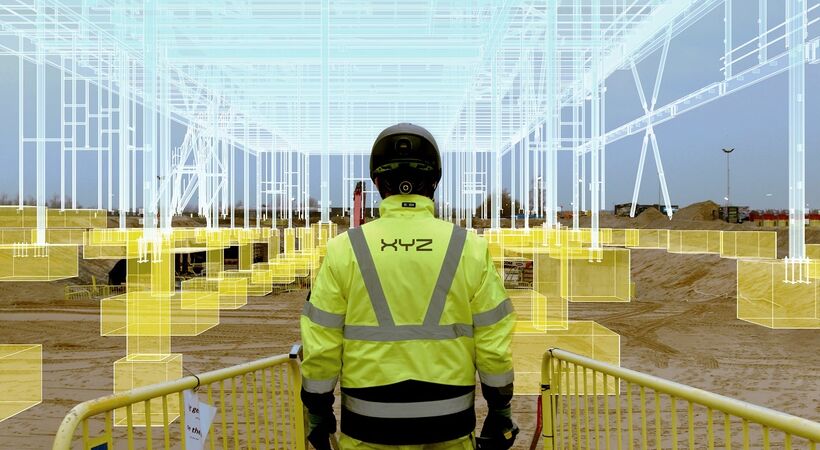Sustainability is rising to the top of the corporate agenda worldwide, and construction is no exception. Against the backdrop of the ongoing climate crisis, it’s no secret the industry’s environmental impact contributing approximately 39% of all global emissions.
The sector is predicted to grow by around $4.5 trillion by 2030, and if we don’t implement practical and scalable strategies to tackle its substantial carbon footprint, there’s very little chance of achieving official Net Zero 2050 targets.
That’s not to say nothing’s being done, and while there remains plenty of room for improvement, we are starting to see results as traditional processes are cast aside for greener alternatives.
I believe digital technology has a significant role to play here by not only helping to boost growth in the sector, but providing innovative ways to reduce emissions and allow professionals to build more sustainably with lower environmental impact.
What innovations have we already seen?
Encouragingly, we have already seen an array of technological advancements across the industry in addition to passion in some groups for sustainable, greener construction, supporting the drive towards low and no-emission ways of working.
Covering a broad spectrum of digital solutions, this includes everything from Common Data Environments (CDE) and ultra-precise carbon reporting platforms to AI-backed hardware and Augmented Reality (AR) devices. As technology becomes more widely available to contractors, these enabling tools have huge potential to deliver more efficient, lower waste and higher-quality builds.
Digital asset information management (AIM) platforms are also becoming a tool for greener project delivery, with construction teams better equipped to manage big data and analyse energy expenditure and waste levels online. This removes inconsistent physical paper trails, a compliance risk in itself, and empowers developers to identify errors and prevent them ahead of time.
Increasing interoperability means that platforms and devices can be programmed to work symbiotically, achieving even greater operational efficiency whilst reducing waste.
For example, at XYZ Reality, we have seen impressive results by integrating Engineering-Grade AR with Autodesk’s cloud-based collaborative file management platform BIM360. This has allowed us to create a direct link to BIM software, allowing design updates to be rendered as holograms in real time, on site, to millimetre accuracy for the first time ever - allowing construction teams to have designs and plans at their fingertips.
Using digital software in this way means on, and off, site personnel can achieve greater accuracy, cutting down on waste materials and unwelcome defects, leading to improved quality and lower emissions throughout projects.
Limiting rework to reduce waste
Post scan and rework, regarded as a major headache for built environment professionals, is one of the biggest waste contributors on construction projects. This (now avoidable) phase, which can take 6-8 weeks to validate online specs alone, leads to significant delays, missed deadlines, unwanted waste and increased costs.
Putting this in context, a report by Wonder revealed that in US construction, rework costs can reach up to 6% of total project costs. Meanwhile, UK government statistics in 2018 showed that around 137 million tonnes of construction waste were produced in the year. Excess waste is harmful to the environment and expensive to process, therefore eliminating scan and rework is a worthwhile ambition.
Digital technology provides a powerful solution. Thanks to greater precision achieved through CAD and BIM software, contractors can build with improved accuracy. Whilst these tools have existed, they have traditionally been design-stage solutions, difficult to translate on-site where the majority of waste inevitably occurs. However, that’s changing with the increasing capabilities of portable AR solutions. For example, our own tool, the Atom, has shown it is possible to reduce reworks to less than 1% (when paired with a field application engineer) in some instances, saving time with real-time validation and money by building it right, first time while helping to work towards sustainability goals.
Removing (or at least reducing) rework is one of many steps to realising a carbon-neutral construction sector. Fortunately, we now have the tools to affect this transition, should leaders within the industry be willing to invest in and adopt digital technologies.
Securing a green future for construction
It’s crucial construction professionals make as concerted an effort to tackle environmental issues as possible. Not only for the good of our planet but to benefit our sector as well.
This means ramping up digital adoption and prioritising those tools and systems that increase project efficiency and lower the probability of potential waste.
Yes, the introduction of new legislation that aligns with the global green agenda will put additional pressure on everyone across the sector, but there really is more carrot than stick when it comes to tackling this challenge.
We are already seeing the benefits of digital tools in limiting emissions on projects. However, there is still progress to be made, and those that embrace change will be one step ahead in the race to become a net-zero industry.





